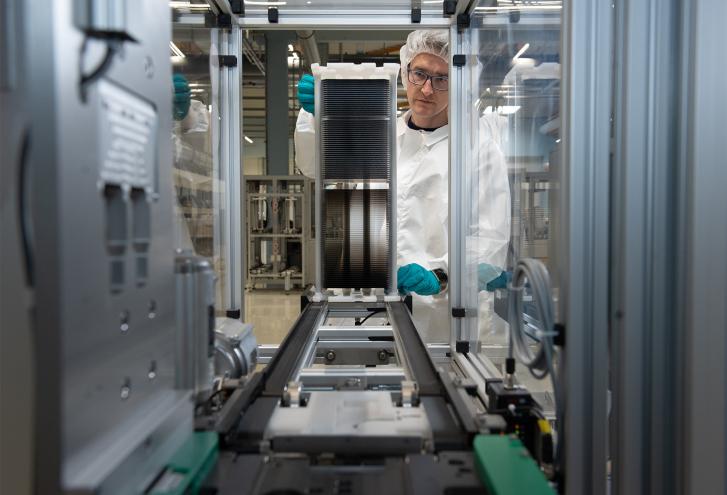
Oxford PV, a pioneer in the field of next-generation solar cells, has set a new world record for the efficiency of a commercial-sized solar cell, marking a significant breakthrough in the drive towards a low-carbon global economy.
The record-breaking solar cell converted 28.6% of the sun’s energy into electricity, as independently certified by Fraunhofer ISE.
The cell was made by depositing a thin film of the material perovskite onto a conventional silicon solar cell. The combined ‘perovskite-on-silicon’ tandem solar cell achieves a conversion efficiency that is substantially higher than that of mainstream silicon-only solar cells, which average 22–24%.
The solar cell was produced at Oxford PV’s integrated production line in Brandenburg an der Havel, Germany. The factory has commenced initial production of the company’s tandem solar cells for integration by solar module manufacturing partners and is ramping up to higher volumes.
The site, operational since 2017, houses the world’s first volume manufacturing line for perovskite-on-silicon tandem solar cells and employs more than 70 staff.
Chris Case, Chief Technology Officer at Oxford PV, said: “Our latest efficiency achievement of 28.6% is more than 1.5% above our record set last year and exceeds our own roadmap plan of 1% annual increases. These record-setting solar cells are made on the same production line as our 27% efficient commercial solar cells, which already meet strict performance and reliability targets.
“Solar is already one of the least expensive and cleanest forms of energy available, and our technology will make it even more affordable. Solar panels integrated with Oxford PV’s solar cells produce more electricity from the same area, making them highly attractive for residential and commercial rooftops. For utility-scale solar farms, our technology will also help them reduce land usage and maintain biodiversity.”
David Ward, Chief Executive Officer at Oxford PV, said: “This world record on a large-area cell is our second in two years and marks another milestone for our technology. The achievement also showcases our strong intellectual property and is a testament to the talent and commitment of our team.
“While we continue to innovate on our perovskite-on-silicon technology on small research-sized solar cells, much of our focus has been on improving our commercial-sized cells for the market, ramping up production, and working with our solar module partners to prepare them for assembly into solar panels. Our team has made excellent progress during 2023 and our innovative solar cells are close to being in the hands of our module-manufacturing customers.”
A spin-out of the University of Oxford, Oxford PV has been developing its perovskite-on-silicon technology based on research-sized cells at its R&D centre in Oxford, UK.
Its production facility near Berlin, Germany, is focusing on scaling up and continuously improving the manufacturing of commercial-sized devices, and the company has recently registered a US subsidiary.




